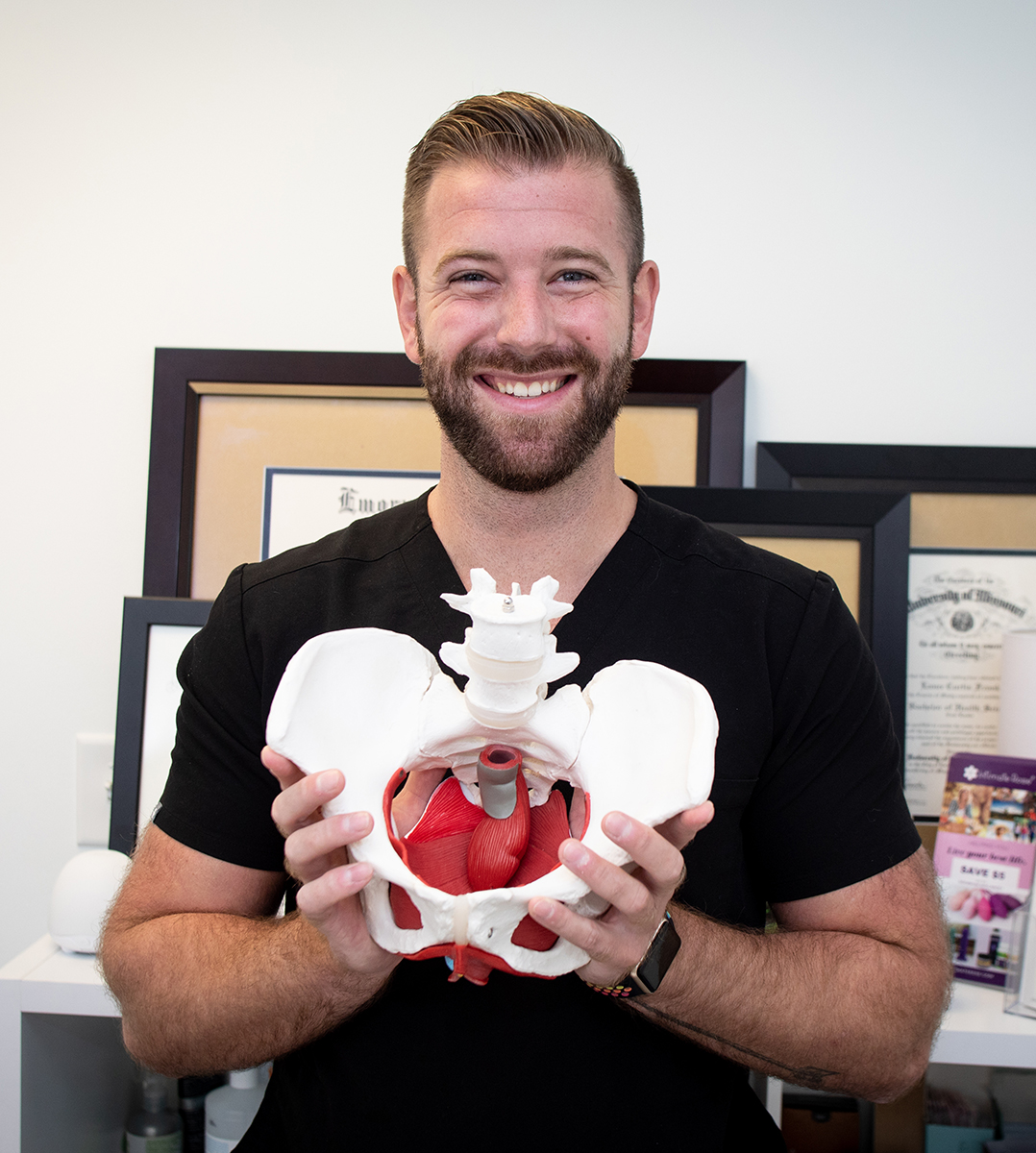Introduction
When you first think of pelvic floor strengthening, is one of the first things (or the only thing) that comes to your mind “Kegels”? If so, you’re definitely not alone. But did you know that strengthening the pelvic floor is so much more than just Kegels? Strengthening in pelvic floor physical therapy can include anything from Kegels, to squats, to sprints or jumping. But how does it work? If someone comes in for incontinence (leakage or bowel or bladder) or prolapse, which seems very specific to the pelvic floor, why would we have to squat? Let’s dive into the topic further!
The Link Between Hip Muscles and Pelvic Floor Strengthening
A strong and functional pelvic floor is essential for overall well-being. What many people might not realize is that hip muscles play a significant role in supporting the pelvic floor. *Click here a quick recap of the role of the pelvic floor*. The pelvic floor and hip muscles are closely interconnected. The hip muscles provide stability to the pelvis, which in turn supports the pelvic organs and the pelvic floor. When the hip muscles are weak or imbalanced, it can lead to poor pelvic alignment, contributing to issues such as incontinence, pelvic pain, and discomfort. In fact, studies have shown that patients that perform hip strengthening exercises with kegels have better results than those who perform only pelvic floor strengthening alone. Similarly, studies have shown that some patients with urinary dysfunctions actually had less hip strength and coordination than those without urinary dysfunctions. All this is to say, the hip and pelvic floor are closely related, and a healthy hip can help keep the pelvic floor healthy too!

Hip Strengthening Exercises for a Healthy Pelvic Floor
What exercises are we talking about when we say “hip strengthening?” There is a huge variety of exercises we can choose from, and your pelvic floor physical therapist will know how to gradually add or increase exercises to challenge you appropriately and get you to your goals! Not only does the exercise choice matter, but the resistance, sets, and repetitions should all be carefully considered to ensure ideal results! Some examples of hip strengthening exercises include:
- Clamshells
- Bridges
- Fire Hydrants
- Leg Raises
- Squats
- Lunges

Incorporating Hip Strengthening into Your Routine
While you can perform all these exercises, remember that you don’t want to overwork the pelvic floor. As we talked about in our earlier blog post, an overactive pelvic floor can also lead to dysfunction, such as painful sex, urinary retention, etc. It’s also important to consider that, while strengthening the hip is a great idea, you may first need to focus on flexibility, stretching, and pelvic floor/hip mobility before beginning to think about adding strength to these areas. Your physical therapist will know how to juggle all these variables to ensure an upward trajectory during physical therapy. However, generally, you want to focus both on hip stability and hip strength. Hip stability will assist the pelvic girdle in being more stable, which will give the pelvic floor more support in doing its job. Hip strength will keep your body functional so you can perform activities without risking injury.
Conclusion
Taking care of your pelvic floor involves more than just isolated exercises. Strengthening your hips is a crucial component of maintaining pelvic stability, which contributes to overall pelvic floor health. By incorporating hip exercises into your fitness routine, you’re not only supporting your pelvic floor but also promoting better posture, balance, and mobility. Remember, a strong foundation begins with strong hips.
If you have questions or want to schedule an appointment to check on your pelvic floor strength, call (404) 445-8784 or visit FlexPTATL.com.


